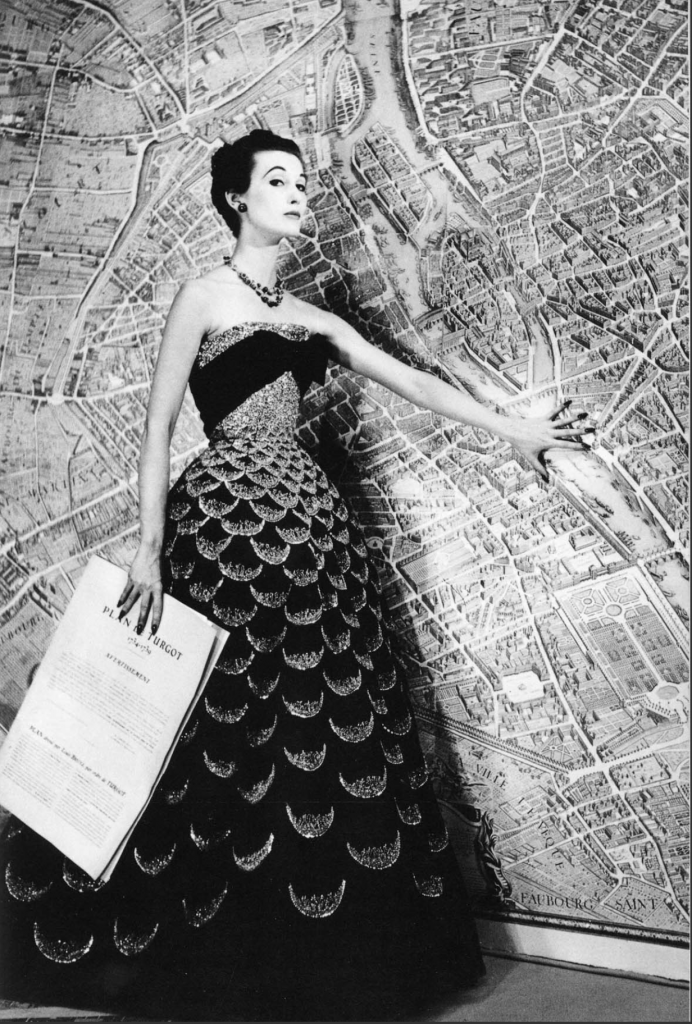Story HA PHUONG
Photos INTERNET
Three pillars of twentieth-century fashion – Chanel, Dioi and Saint Laurent – transformed the way modern women dress.

Pioneering steps
In the early 20th century, the world saw women asserting their individuality in a variety of ways, including fashion. After World War I, there was a desire to shed the heavy, outdated dresses of the past, and a slender woman named Gabrielle “Coco” Chanel arrived to change the course of fashion history.
After her mother passed away at a young age, Gabrielle was sent by her father to a convent, where the nuns wore simple and understated black and white clothing – the genesis of the legendary designer’s legacy. Recognizing the excessive intricacy of women’s attire at the time, Chanel was determined to simplify it, starting with hats that were reduced in detail, designed with wider brims and often adorned with just a feather or ribbon. From these modest successes, she gradually ventured into women’s clothing, with designs in complete contrast to the prevailing fashion trends.
Coco Chanel rejected the elaborate, Art Nouveau-influenced style of Paul Poiret, and preached to upper-class women that “to dress elegantly does not mean to be pretentious,” marking an era of fashion as a declaration of equality for women. Throughout her career, Chanel pursued a fashion philosophy that offered both comfort and elegance, including her famous tweed suits, now a symbol of the soft power of the strongest women.

Men who revolutionized fashion
Christian Dior began his career by creating and selling fashions sketches, which led to being hired by designer Robert Piguet. After serving in the army during World War II, he joined the fashion house of Lucian LeLong, where he learned the essence of tailoring and materials, as well as how to operate a high-end business. In 1947, Christian Dior debuted his first collection under his own label. It was acclaimed by fashion enthusiasts, who believed that DIOR would revolutionize fashion. DIOR’s iconic New Look dress reasserted that feminine, voluptuous dressing would return for women who had lost the privilege of being stylish during wartime.
Christian Dior’s clothing featured elegant and modern lines while celebrating the female form. His designs emphasized the bust and waist, with sturdily curved coats at the hem, creating an illusion of fuller hips. The final touch was an A-line skirt that fanned out, adding fluidity to the silhouette. Dior used a variety of fabrics in large quantities, satisfying a post-war craving for silk. On voile fabric, thousands of meticulously embroidered tiny flowers bloomed, some even completely handcrafted to mimic real flowers. DIOR’s designs quickly spread worldwide and became iconic.
Christian Dior passed away in 1957, and his legacy was immediately carried forward by a young man who would one day carve his own name in the annals of fashion history.
That designer was Yves Saint Laurent, who at 17 years old had been directly recruited by Christian Dior as an assistant. When Dior passed away, Yves Saint Laurent did not disappoint, establishing a new era for French and global fashion. Taking over the DIOR fashion house, he innovated its legacy in his own way by introducing dresses with lowered waistlines, shorter and gently flared cuts, and even experimenting with leather. During those years, the fashion world witnessed Saint Laurent’s rebellious personality emerge in what was then Paris’s most prestigious fashion house. However, under someone else’s wing, his full potential could not be completely realized and Yves Saint Laurent established his own brand in 1962.

Saint Laurent’s initial designs felt both novel and familiar: dresses and coats not clinging to the wearer but softly flaring, allowing the body to almost disappear within the garment. Over time, he designed many outfits that resonated with their progressiveness and timelessness. He was the first to transform men’s Le Smoking suits into tuxedos for women. Saint Laurent also designed daringly sheer dresses and blouses, revealing women’s skin through delicate black voile. He showed his curiosity for art and culture with designs inspired by Mondrian’s paintings and haute couture collections influenced by Japanese and Indian cultures. All these innovations laid a solid foundation for global fashion.
Every milestone was a brilliant beginning, creating pivotal turns in fashion history. If Chanel started by inspiring the blurring of gender lines, Dior reminded us of the privilege of elegance and femininity, and Saint Laurent was the trailblazer who took fashion out of its comfort zone. These three designers served as 20th-century lighthouses, illuminating the path for the future of creative fashion.










